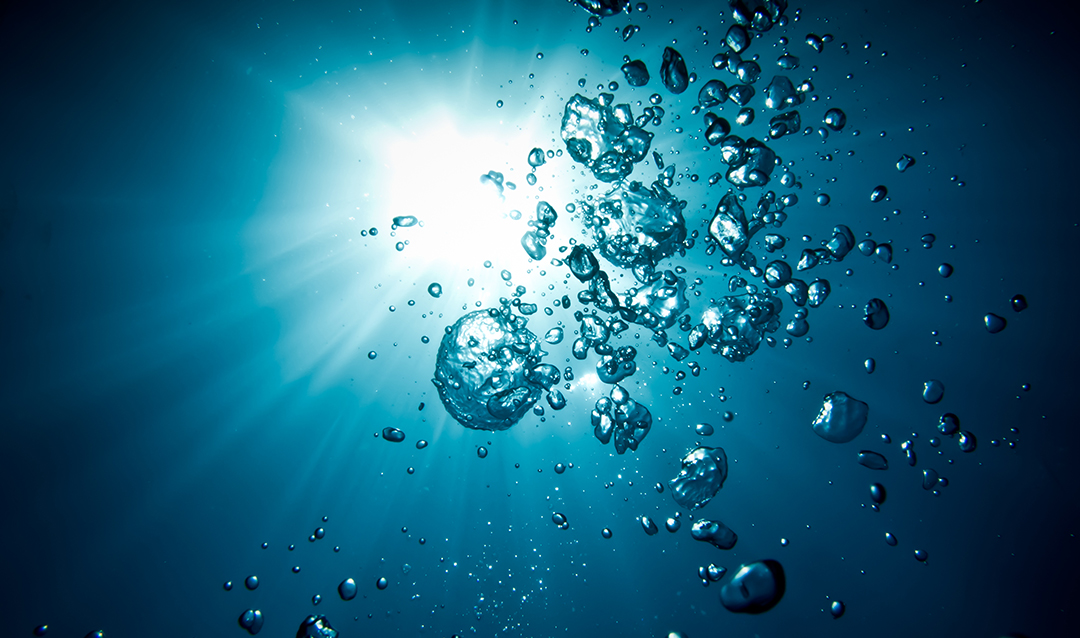Sunlight-capturing technologies for renewable energy are nothing new. Solar panels have been cropping up all over the world with ever-increasing frequency, using sunlight to generate electricity.
The production of green energy, however, isn’t always green. The manufacturing of solar panels, for example, requires a great deal of energy derived from fossil fuels. A promising alternative approach is photocatalysis, through which solar energy is utilized to generate chemical fuels, such as hydrogen and light hydrocarbons, from water and carbon dioxide. For example, in the process of solar-driven water splitting, water is converted to hydrogen gas in the presence of sunlight and a photocatalyst—a material that through the absorption of sunlight produces a chemical reaction. This hydrogen can be used as transportation fuel or as a chemical feedstock for fertilizer or chemical production, reducing the currently significant impact of these two sectors on total greenhouse gas emissions.
However, the development of photocatalysts hasn’t always been the most sustainable, says Steven McIntosh, professor of chemical and biomolecular engineering. The financial and environmental costs of a particular process and the materials it requires can be high and often cannot be produced at large scale.
McIntosh and his colleagues are looking for a simpler and more sustainable solution.
“We’re trying to design systems and processes that from day one don’t have barriers to implementation,” says McIntosh, who also serves as associate director of Lehigh’s Institute for Functional Materials and Devices. “Our driver is to try and utilize materials that are scalable, but primarily our novelty is in the process by making them.”
Using what McIntosh calls “something between a hybrid biology and chemistry approach,” he and his colleagues have demonstrated the utility of biomineralization—the process by which biological systems create inorganic materials—to realize benign synthesis of functional materials for use in the energy sector. In other words, they’ve developed an environmentally safe, easily adaptable procedure for the sustainable production of a variety of photocatalysts.
The team reported its results in an article, “Enzymatic synthesis of supported CdS quantum dot/reduced graphene oxide photocatalysts,” which was featured on the cover of the August 7, 2019 issue of Green Chemistry, a journal of the Royal Society of Chemistry. The paper’s authors include McIntosh; former Lehigh Ph.D. student Leah C. Spangler ’18G; current Ph.D. student John D. Sakizadeh; Christopher J. Kiely, Harold B. Chambers Senior Professor of Materials Science and Engineering; and Joseph P. Cline, a Ph.D. student working with Kiely.
The team’s approach stems from earlier research in which McIntosh and his colleagues successfully demonstrated the first precisely controlled, biological way to manufacture quantum dots. Their one-step method starts with engineered bacterial cells in a simple, aqueous solution and ends with functional semiconducting nanoparticles, without resorting to high temperatures and toxic chemicals.
In the Green Chemistry paper, team members demonstrated that they could utilize the same biomineralization process—using enzymes at room temperature rather than toxic chemicals—to synthesize both quantum confined nanoparticle metal sulfide particles and the supporting reduced graphene oxide material to create a photocatalyst that splits water to form hydrogen.
“It is critical to recognize that any practical solution to the greening of our energy sector will have to be implemented at enormous scale to have any substantial impact,” says McIntosh. “Our water-based process represents a scalable green route for the production of this promising photocatalyst technology.”





